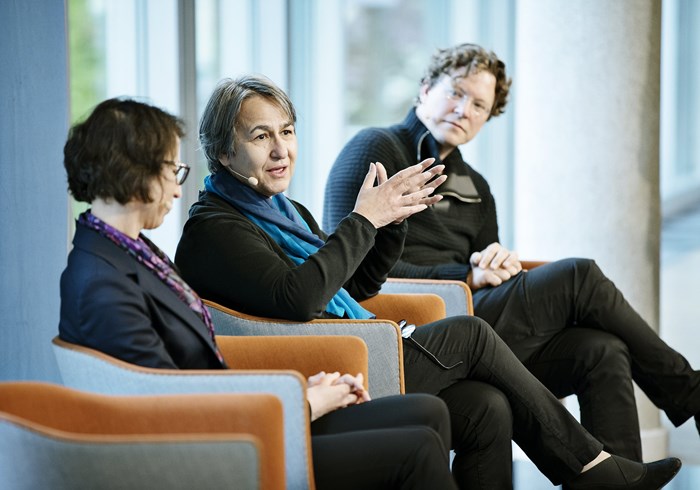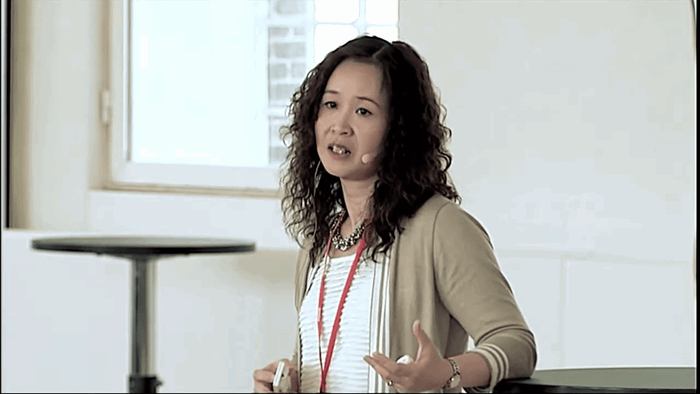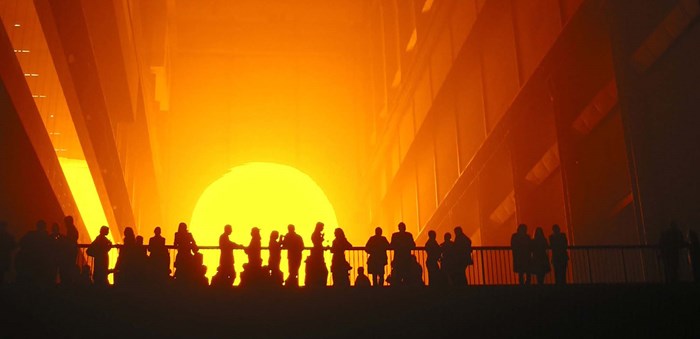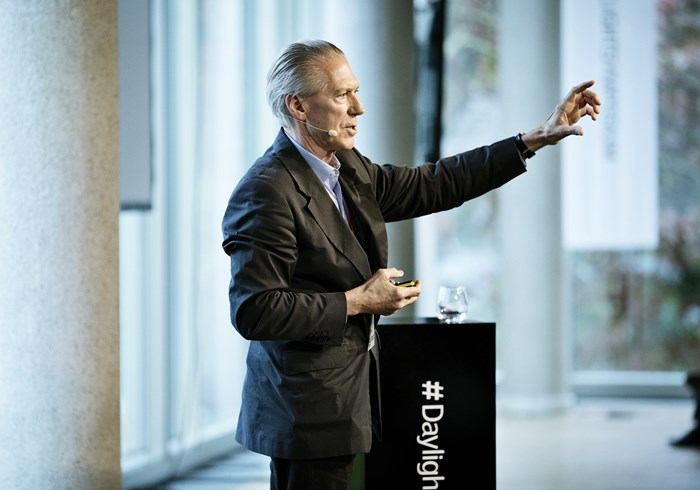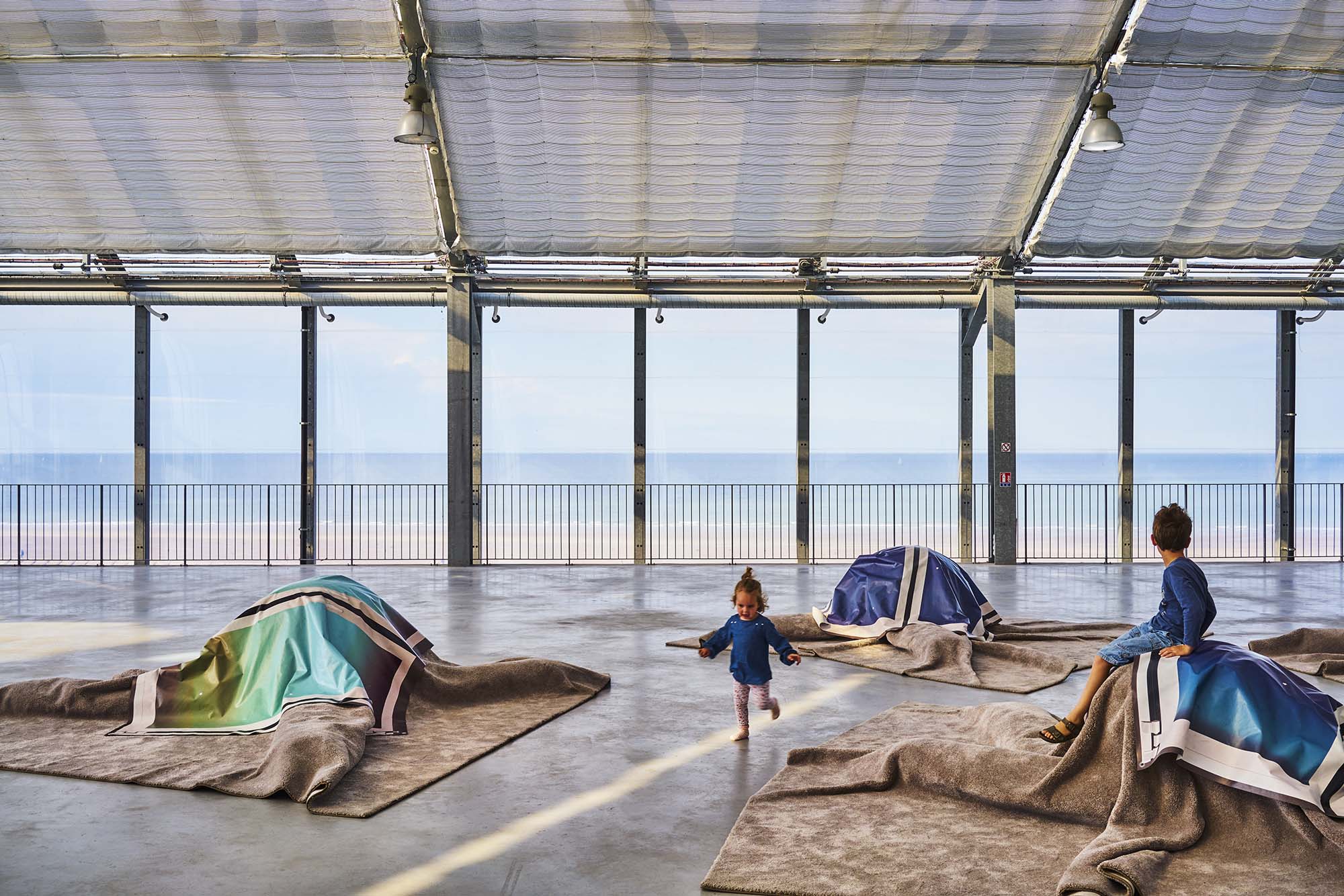
Architects Lacaton & Vassal have a habit of giving their clients more than they expect from a building. They also pursued this strategy with the new regional museum of contemporary art (FRAC) in Dunkirk. Karine Dana describes the twin structure that incorporates the former AP2 dockyard hall with all its potential for unexpected uses. Speaking to the employees and visitors of the museum, she also noted how the building puts them not only in close contact with each other, but also with the climate and landscape on the coast of the English Channel.
By Karine Dana
Photography by Brendan Austin
With the new regional museum of contemporary art (FRAC) in Dunkirk, architects Lacaton & Vassal have created a new cultural and social hub on the edge of the sea. The building incorporates the vast volume of the former AP2 dockyard hall, with all its potential for new and unexpected uses. Whereas its permeable outer skin puts users in close contact with the climate outside, its generous yet flexible internal spaces foster social encounter and form an impressive setting for the works of art on display.
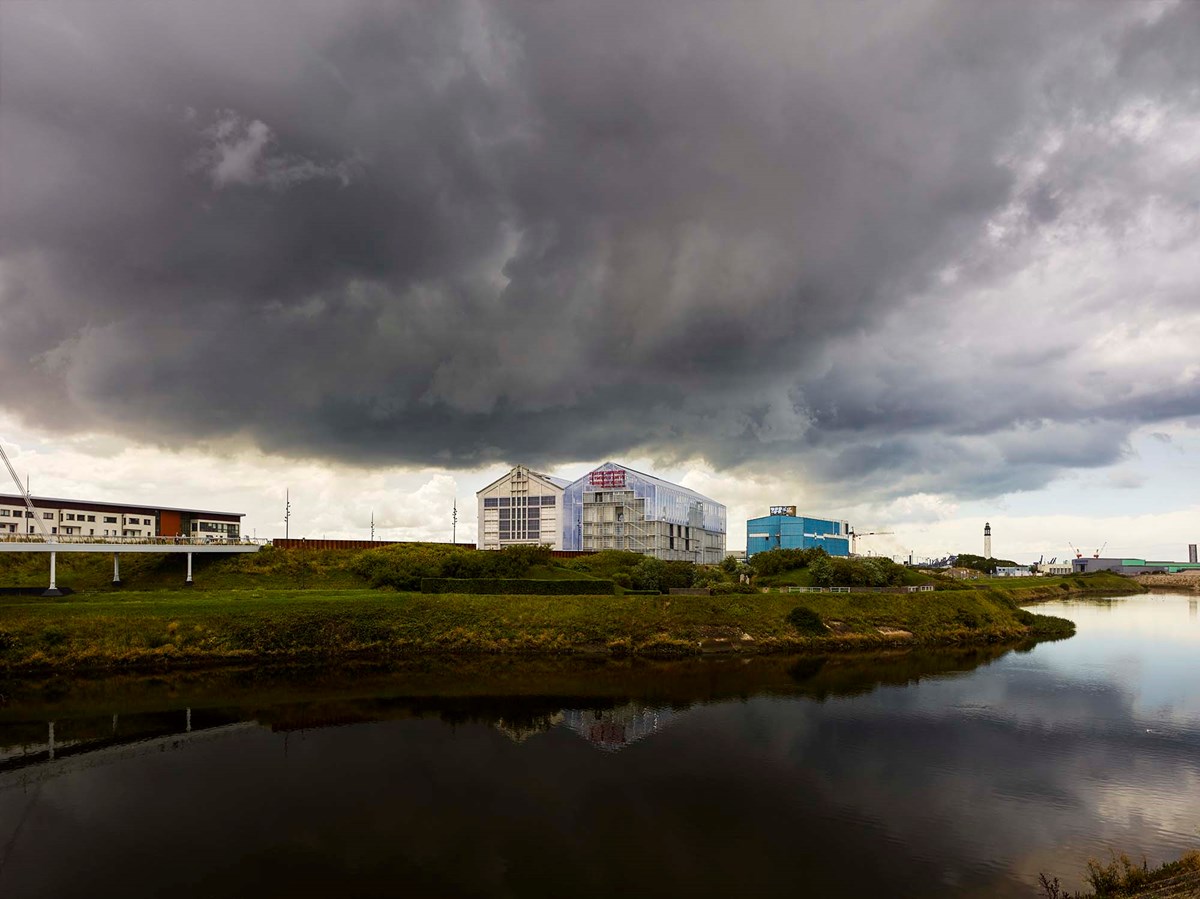
When the municipalities association of Dunkirk decided to move the Fonds Régional d’Art Contemporain (FRAC) Nord-Pas de Calais to the AP2 factory hall, it wanted to have the former shipyard building converted for the new use. However, architects Lacaton & Vassal won the competition in 2009 with a radically different proposal. Instead of filling the hall with museum spaces and mutilating it in the process, they decided to leave the historic industrial monument empty and to place a new building of the same size − 25 metres wide, 35 metres high and 70 metres long − at its side. This decision had certain advantages, not only functionally but in terms of space as well. It also challenges the expediency of an urban planning policy that is all too often destructive in its approach to industrial heritage.
The FRAC is almost directly next to the sea and, at the same time, at the outermost edge of the urban development area ‘ZAC du Grand Large’ in Dunkirk. The latter is a component of the Neptun project initiated in the 1990s with which the city of Dunkirk wants to create closer ties between the former industrial harbour and the urban municipality. In the harbour, nearly all the industrial installations have disappeared in the last few years. Only the AP2 hall has been retained as a last relic of the French ship-building industry.
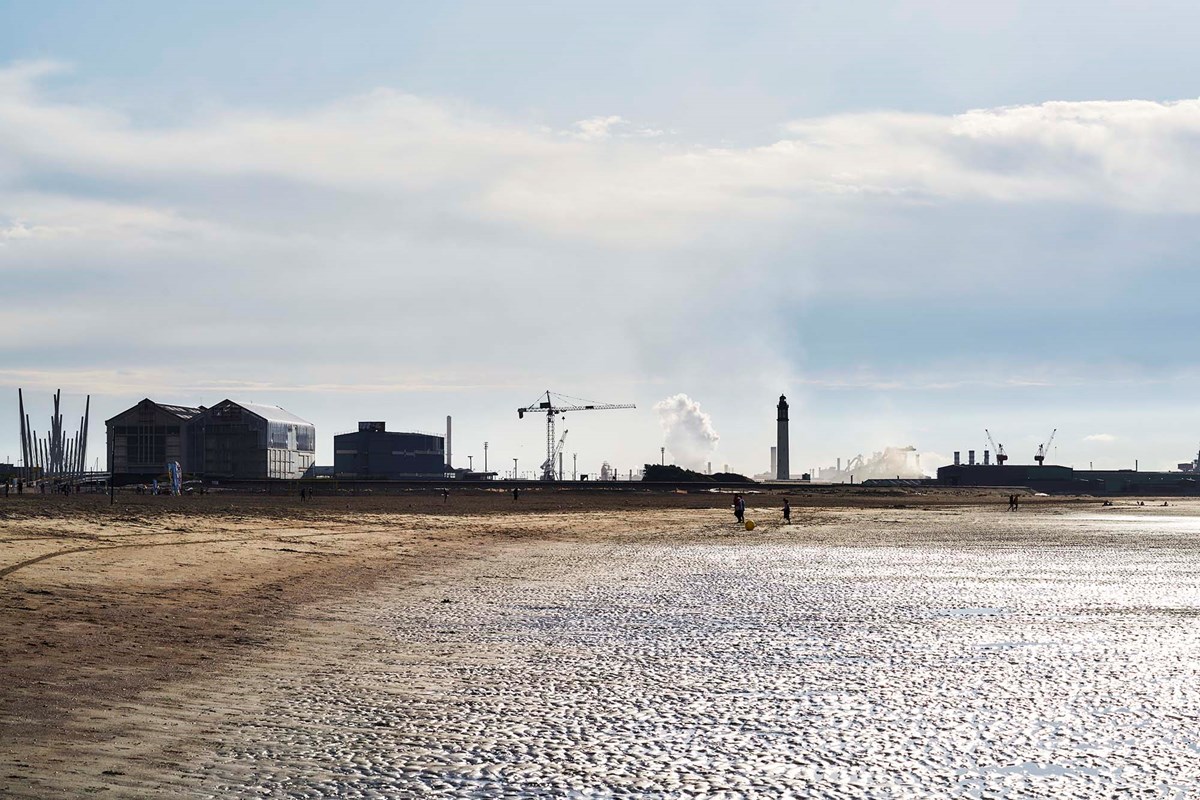
The huge industrial building, with its steel and reinforced concrete skeleton, appears as if it had been stranded on the outskirts of a new residential district. When the museum opened in 2013, the break between the FRAC and the AP2 hall, and the rest of the urban renewal district was particularly noticeable. The immediate surroundings still consisted of vast tracts of empty land, and it took some time for local residents to identify themselves with the twin building and its huge dimensions. In the following years, however, the cultural institution gradually coalesced with the urban landscape and new uses for the building eventually became established. With their design, the architects have created the preconditions for a wide range of different social and cultural uses. Now, it is up to the FRAC team to exploit this potential over time by designing an appropriate programme for the museum.
“The building allows us to come into contact with a completely new target group that is enthusiastic about architecture. In this way, it expands the range of tasks we once had to perform. In the meantime, we have started to offer special architectural guided tours during which the depot rooms are viewed as well...”
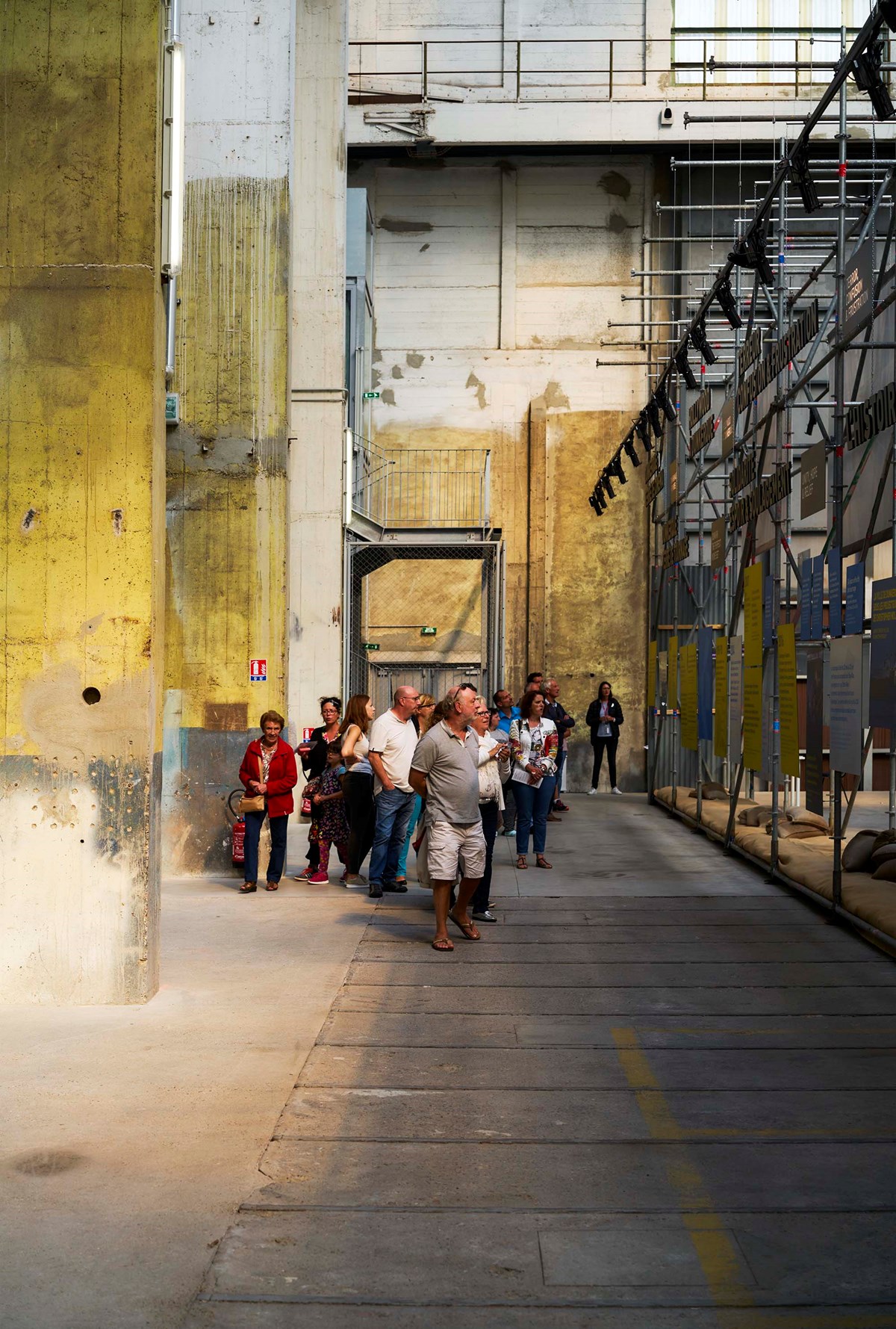
"...The moment people consider the building from the viewpoint of architecture, they begin to fully identify with it."
Adèle Frémolle, Deputy Director
The potential of empty space
By doubling, as it were, the existing building, the architects give visitors and FRAC employees a dual opportunity to experience art and architecture in a new way; on the one hand, through the confrontation of an artistic programme with an enormous empty space and, on the other, through the reactivation of a piece of industrial architecture that makes it possible to escape from the conformity of the surrounding new buildings. Although the two structures are the property of the higher-level municipalities association, the AP2 hall will be used by the city sooner or later. Together with the management of the FRAC, the city administration is already working on plans and financing for the future use of the hall, which is to include exhibitions, concerts, sports and diverse other events. At the moment, visitors to the museum still have to content themselves with looking through a large glass window at the old industrial hall, which, for the people of Dunkirk, symbolises a history that is as illustrious as it is painful.
In contrast to conventional museums, the FRAC has the task of building up a fund of contemporary art in the French regions and making it accessible to as wide a public as possible. As if they wanted to emphasise this opening gesture, the architects gave their new building three entrances. The staff have their own entrance in the north. Visitors enter the ground floor from the east via a courtyard or gain access to the first floor over a 300-metre footbridge designed by Brigit de Kosmi. This pedestrian walkway is an extension of the city beach and promenade further east and passes over a canal before leading into the building. Once inside, it crosses the FRAC lengthwise in the form of an interior ‘street’, from where it is possible to experience the neighbouring hall in all its dizzying grandeur.

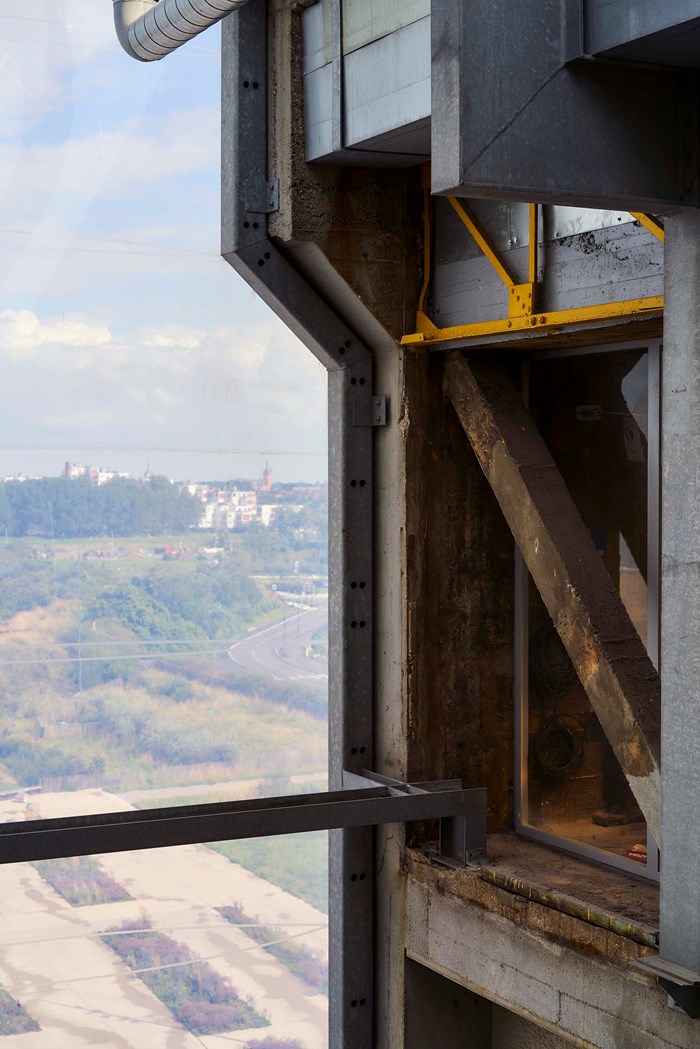
Two kinds of climate, two kinds of spatial experience
Large, open floors and rooms of different heights characterise the inside of the FRAC. On the ground floor, there is the visitor reception area and a bar designed by Lang/Baumann artists. The museum administration offices are on the second floor. The exhibition rooms occupy all four levels in the east half of the new building; in the west half, the collection depots are accommodated on three floors. This spatial arrangement is favourable for visitor routing and for frequent replacement of the works on show. Moreover, the different areas are completely interchangeable as far as use is concerned.
“Mobility and flexibility are linked to the availability of space rather than the movability of building elements”, explain the architects. “If a lot of space is available, things can take place simultaneously and interactions can result. In addition, the rooms allow different forms of interpretation.”
The useful areas are housed in a skeleton construction made of prefabricated concrete parts. In order to adapt the spaces to the frequently changing exhibitions, they are equipped with a system of light, mobile partition walls that the architects had previously designed for the Palais de Tokyo in Paris and used again here. On the outside, a lightweight bio-climatic envelope that lets in light and air encloses the solid core of the building. Between the core and the shell, spacious access areas are accommodated. Automatic doors separate the exhibition and office spaces from this intermediate area, which functions as a climatic buffer.
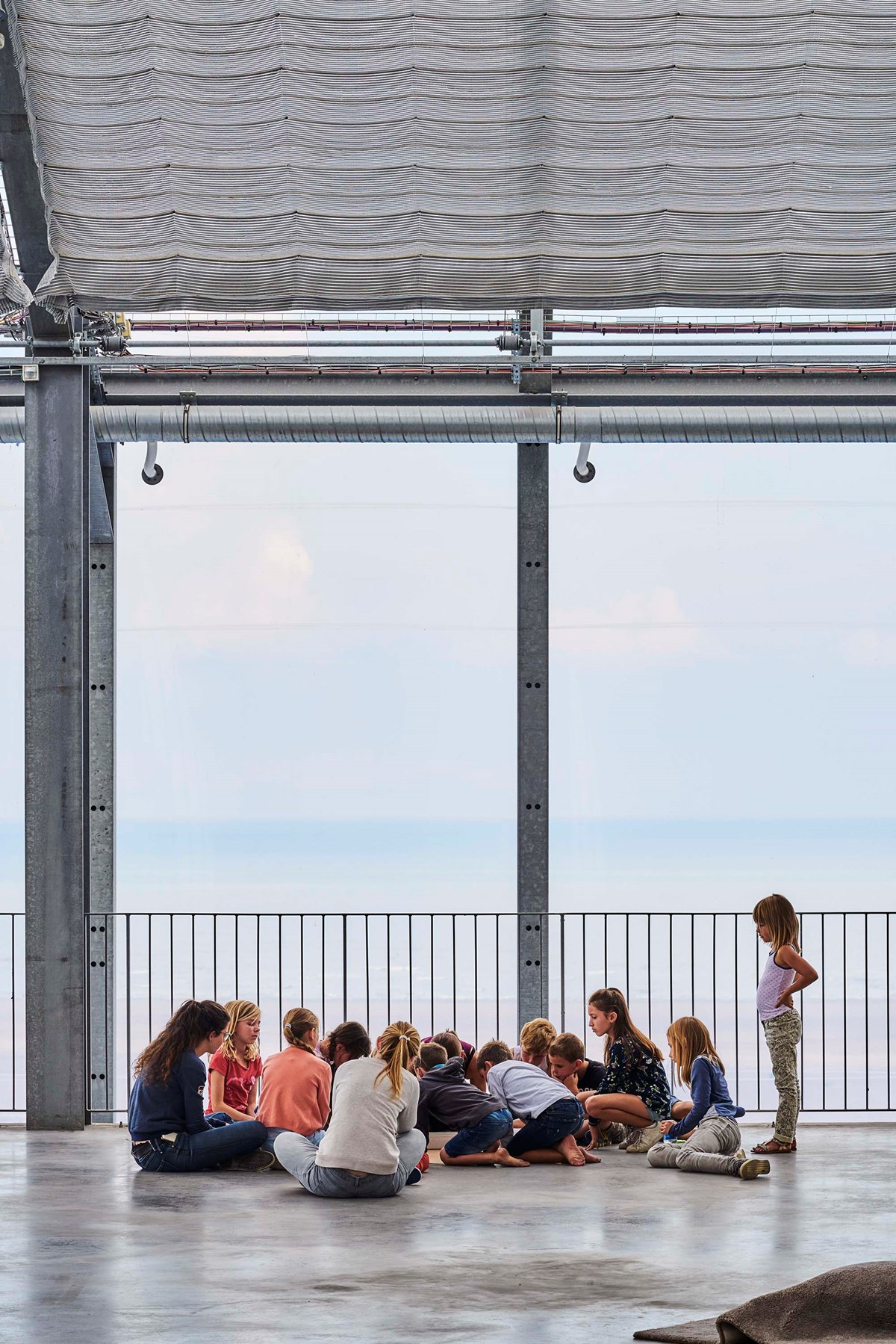
“In the exhibitions, the sea is ubiquitous. This alters the way in which a museum visit takes place and also changes our relationship to everyday work. I can no longer detach myself from it."
Élodie Condette, programme manager
This means that the public and staff are always in contact with the outdoor climate. The employees tend to dress in multiple thin layers, as museum director Keren Detton explains. “In this way, we can simply put on an article of clothing and then take it off again when we go from one floor to the next. I like this idea very much. We are always connected to the seasons and the weather outside in some way or another. It is very pleasant when the body becomes part of a natural cycle in this way.”
For visual perception too, the access areas are a double asset. Two parallel landscapes unfold before the eyes: that of the sea to the north and that of the works of art on the exhibition levels. Flooded with daylight, the intermediate climate zone provides space not only for the movement of visitors but also for the superimposition of worlds of imagination and chance encounters. Its effect is based on a very permeable facade made of polycarbonate panels on the lower part of the building and a metal skeleton with a double ETFE membrane on the upper part. The membrane envelope is fitted with automatic openings that are controlled by temperature, wind and moisture sensors. The sensors come from the professional horticulture sector and enable easy control of the intermediate area’s temperature.
"The AP2 hall is a singular and symbolic object. Its internal volume is immense, bright, impressive. Its potential for uses is exceptional. To implant the FRAC as a catalyst for the new area and to keep the hall in its entirety became the basic idea of our project."
Anne Lacaton & Jean-Philippe Vassal, architects
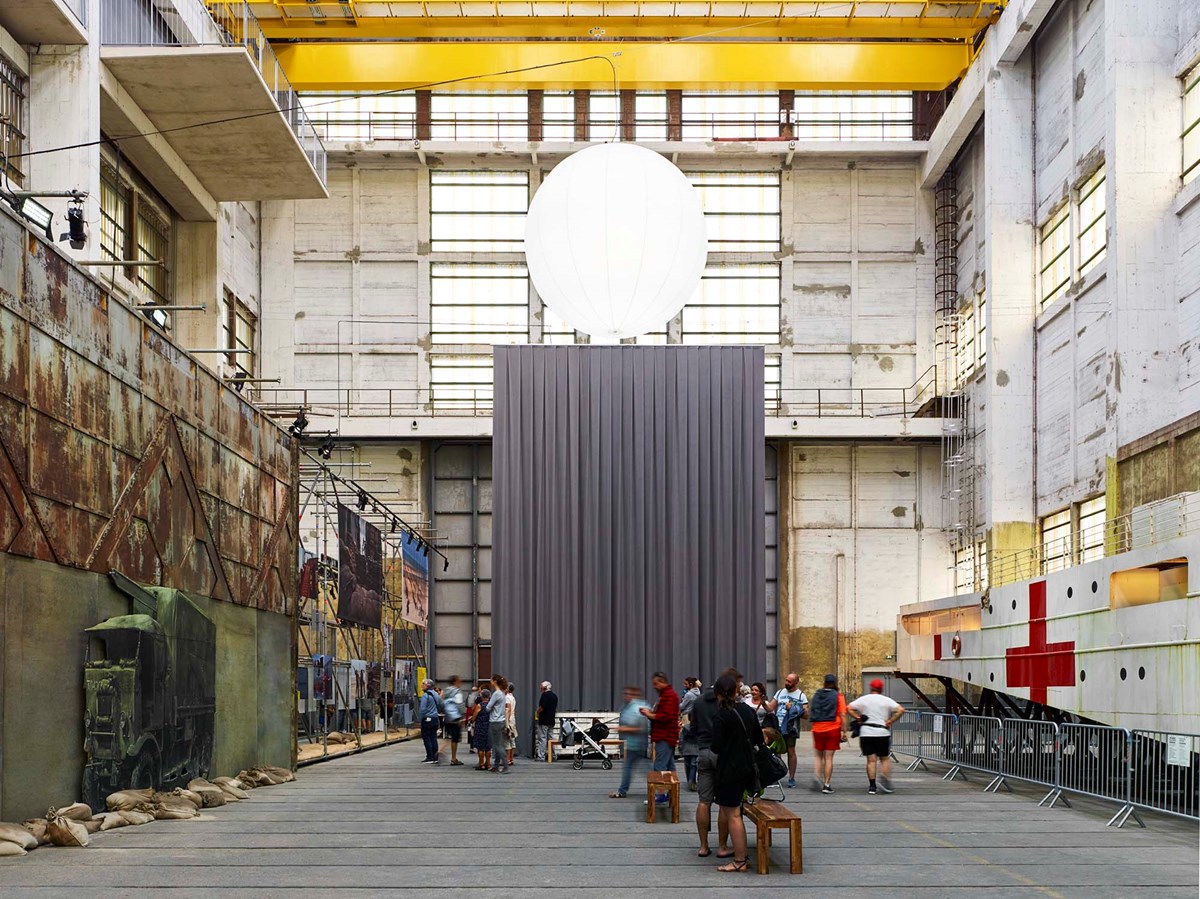
The spatial and atmospheric circumstances, of course, influence how the museum is used and also how the rooms connect people or keep them at a distance. “For us, daylight is always a natural component of any concept developed for exhibitions. Do we want to block it out or use it to set the scene? The relationship to light is always present in our work and is subjected to close scrutiny in the positive sense,” declares FRAC’s programme manager Elodie Condette. Likewise, the dimensions and the acoustics of the rooms have an effect on the exhibition concepts and the behaviour of the visitors. “There is a great deal of space on the different levels but the entrances to the exhibition rooms are rather on the small side. This means that the visitors often get into conversations with each other at the entrances and exits of the exhibitions,” says Condette. “The contrast in scale and the ways in which people move around result in relationships of proximity. On the one hand, the visitors are impressed by the size of the rooms; on the other, this closeness reduces their reluctance to approach the museum personnel and ask questions.”
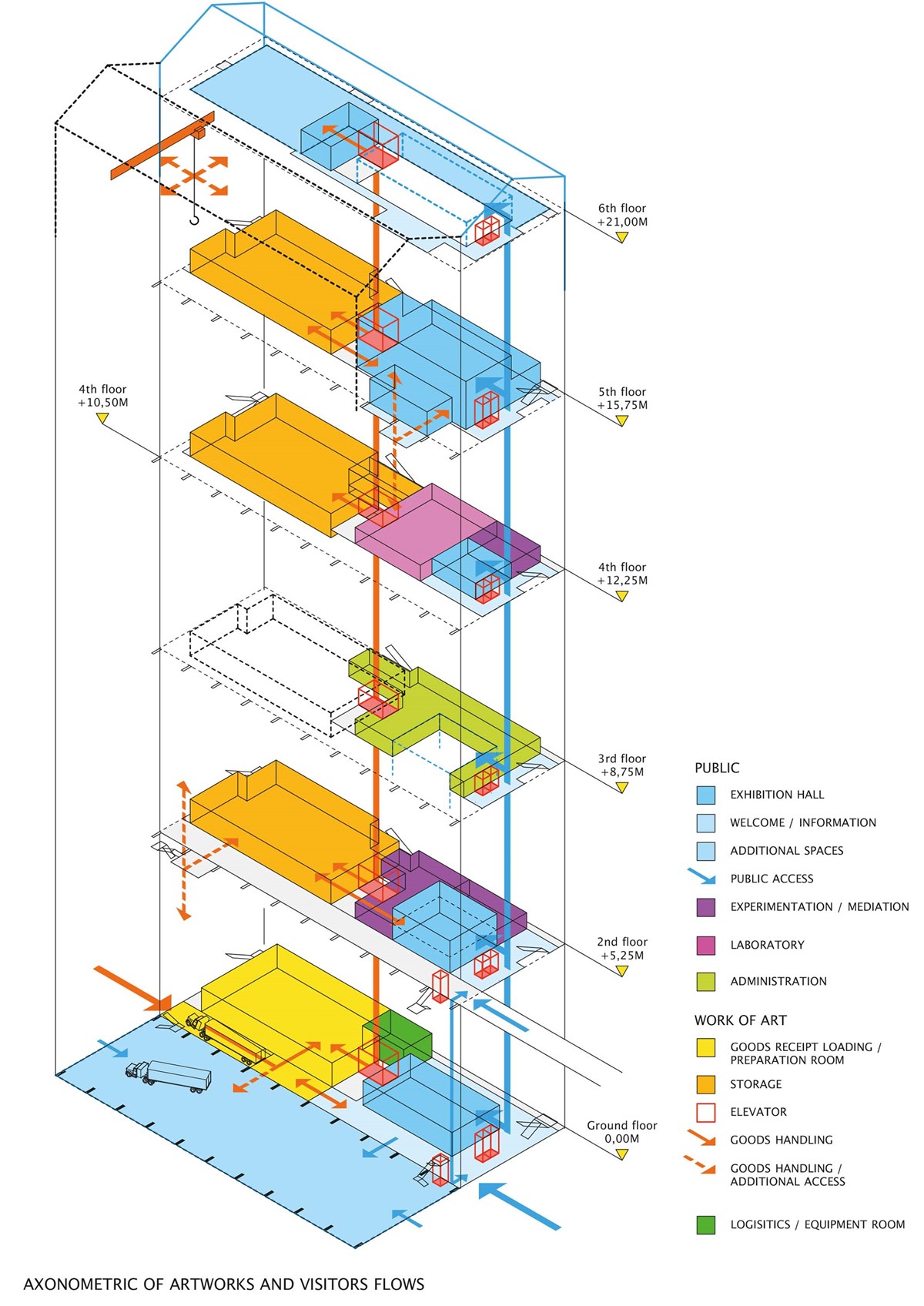
"Movement in these open, spacious rooms encourages people to approach each other and enter into discussions..."
“...This applies not only to visitors but also to the entire FRAC team, which works in an open-space office here. People encounter each other and begin to talk because the spaciousness of the rooms allows it.” Élodie Condette, programme manager.
By bringing the landscape and the outdoor climate into the building, the architects created an important framing parameter for the exhibitions. This real, very actual feature precedes all cultural intentions and all spatial situations. It has an enormous influence on how visitors and staff perceive space and on how they communicate with each other. The special spatial atmosphere becomes most noticeable on the top floor of the new building, which serves as a resting area and viewing platform but does not have any predetermined use. Here, the smell of sea spray, a quiet breath of wind and the continually changing daylight of the north are the most important elements of the architecture and the collective space.

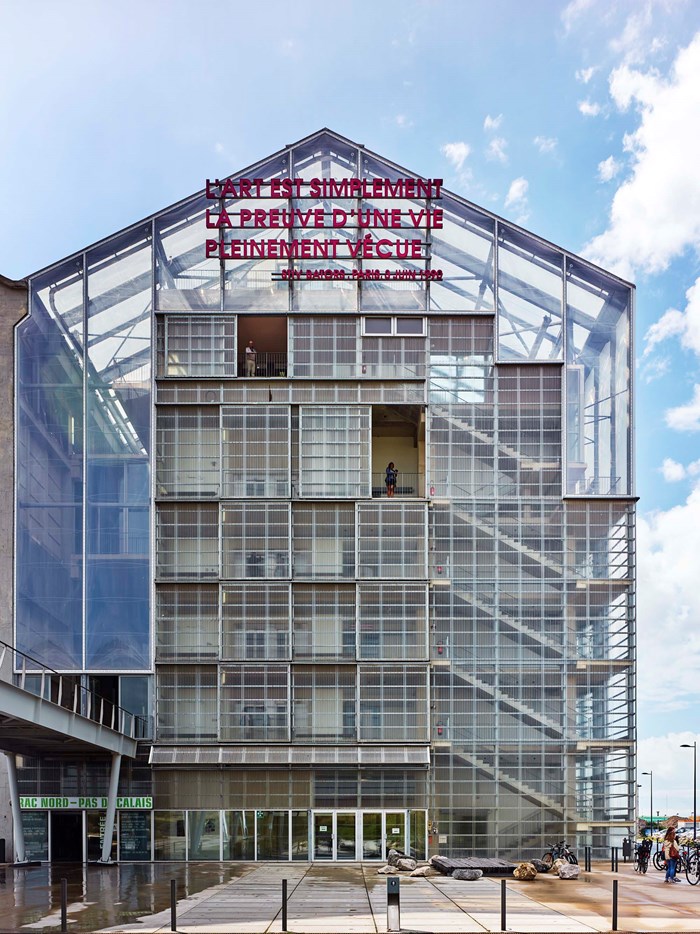
Client: Municipalities association (Communauté Urbaine) of Dunkirk, FR
Architect: Anne Lacaton & Jean-Philippe Vassal, Paris, FR
Location: 503 Avenue Bancs de Flandres, Dunkerque, FR
An architect by training, Karine Dana works as a freelance writer and journalist in the press sector and publishing, and as a film-maker in the field of architecture. She made the first movie devoted to the approach of architects Anne Lacaton & Jean-Philippe Vassal and Frederic Druot. Her movies can be found at https://vimeo.com/channels/1254948
